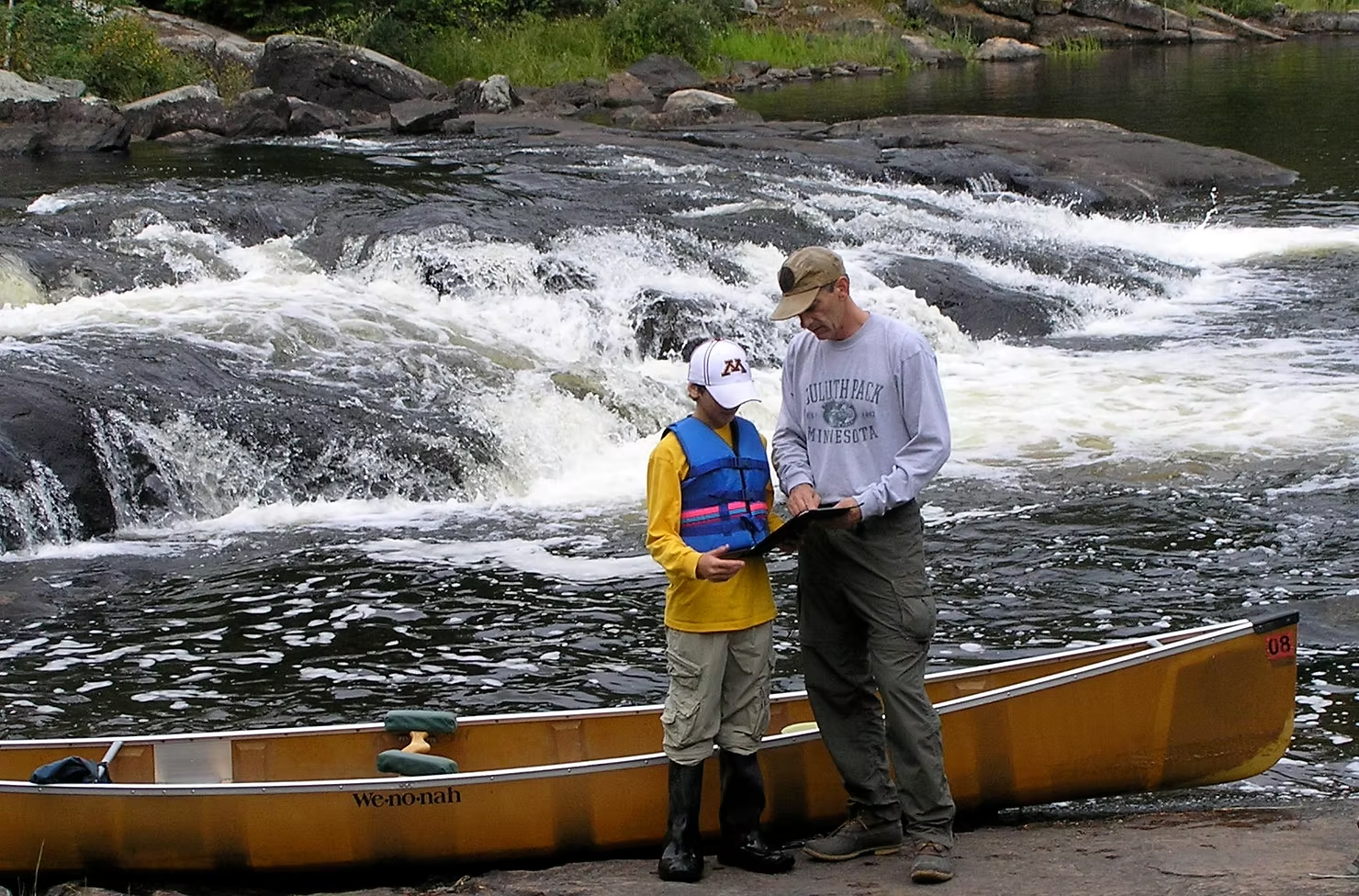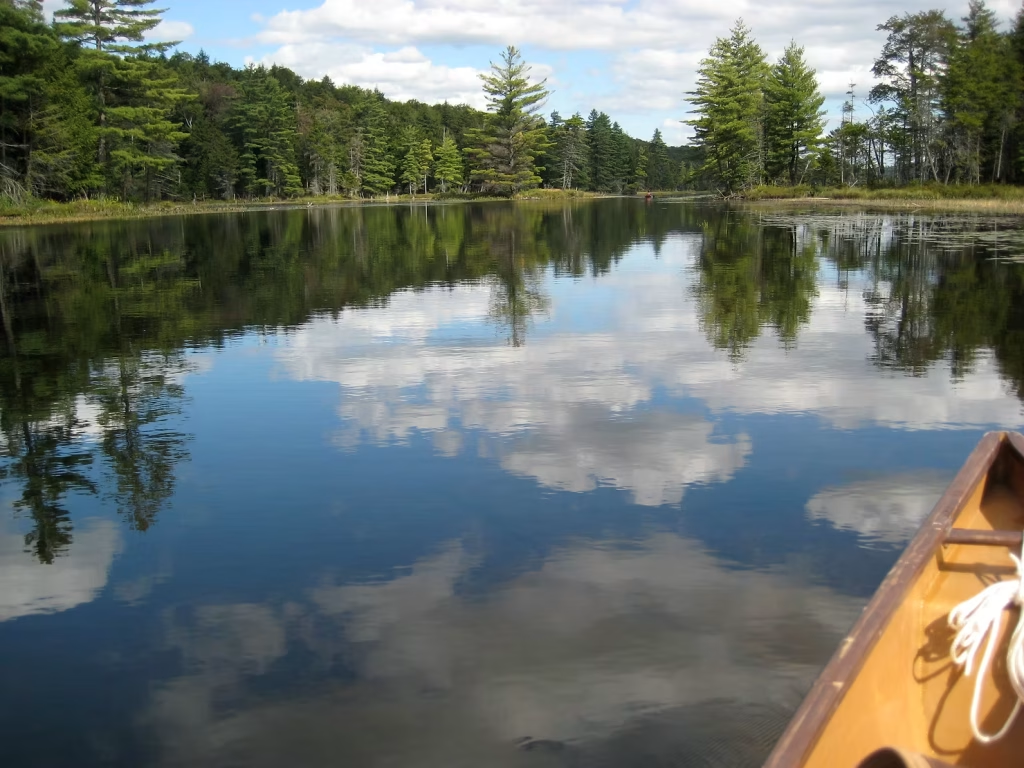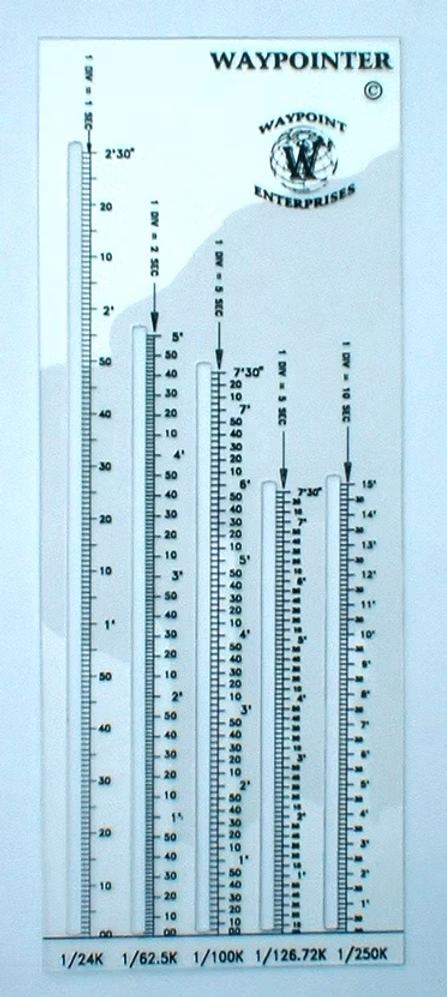
MAPS FOR THE BWCA

Three map companies have long serviced the BWCA – Fisher (www.fishermaps.com), McKenzie (bwcamaps.com) and Voyageur (voyageurmaps.com). National Geographic is the new kid on the block.
NGS maps are beautifully executed – complete, precise and accurate.
Here’s how they differ from the competition:
The entire Boundary Waters are contained on just two waterproof, folded sheets (both sides of the page are printed). Map #753 covers the western half of the BWCA; #752 the eastern half. The scale is 1” = 1.1 miles which, I think, is ideal for trip planning and navigating. Some people, who are used to the 2-4 inches per mile scale of other BWCA maps, argue that this scale is too small. But it’s only slightly smaller than the 1:50,000 (1.25 inches = 1 mile) Canadian topo maps that are popular for canoeing in Canada.
A scale of roughly 1 inch = 1 mile allows you to roughly determine distance without using a ruler or dividers. The printing is typical “National Geographic Society” ultra-crisp, so what you lose with a smaller scale you gain in clarity. Naturally, campsites and portages are marked. Contour lines, elevations, magnetic declination information, plus what you need to set up your GPS is given in the map margin.

Upper Frost River (my favorite Boundary Waters route)
If you use a GPS you’ll love these NGS maps because they have UTM coordinates printed on the face, and these coordinates align perfectly with the UTM numbers in the map margins. This simplifies plotting a precise location. Canadian topo maps have been doing it this way for decades; American maps are slowly following suit. Coordinate-matching numbers enable you to plot a precise fix on your map even if your GPS does not have a built-in map. Voyageur and McKenzie maps have UTM coordinates too, but unlike those on NGS maps, the numbers and coordinates do not line up.
Plotting a fix using a GPS is easy. But first, you must set your GPS to read the UTM numbers: Go to Settings and select Position Format. Here, you will find a number of choices. Select UTM-UPS (Universal Trans Mercator-Universal Polar Stereographic). Then, close out of Settings and return to the main screen which will now show the UTM numbers of your satellite fix.
There are two sets of numbers: the first is the Easting coordinate; the second is the Northing coordinate. Read these numbers “right and up” along the map margin, i.e., first plot the easting coordinate (read “right”) , then plot the northing coordinate (read “up”). You are located where the two lines cross. What could be easier? Note: to avoid error you must pre-set your GPS to the correct map datum* (example: WGS 84). The “datum” is given in the margin of the map.
Using the map below, try the following practice problem:
Problem: The UTM numbers on your GPS read: 062910 529120. Plot these numbers on the map below:

Answer: You are located at the southeast corner of Lois Lake.
Why not forget UTM and just plot your position as latitude/longitude? Because Lat/Lon
is not a rectangular grid – the distance between longitude lines changes as you go north or south. To locate a Lat/Lon point you’ll need to use a plastic “roamer” like the one pictured below – it’s a hassle, impossible from the seat of a bobbing canoe. UTM coordinates, on the other hand, are perfectly rectangular, so plotting a fix is as simple as dividing the distance across a square into 10 equal parts.

You’ll need a “Roamer” like this one to plot degrees, minutes, seconds of Latitude-Longitude.
“It ain’t easy!”
Check out the National Geographic Boundary Waters maps. I think you’ll be pleasantly surprised.
*A datum is a part of a shape that best fits the part of the world that’s indicated on your map. The Earth is not a uniform ball, so certain datum systems provide a truer picture than others for some portions of the earth’s surface. Essentially, the map datum tells your GPS what “Earth shape” the map is using.
——————————-
My book, BASIC ILLUSTRATED MAP & COMPASS, simplifies navigation. Portions were used by the (no longer active) Minnesota Outdoor Leadership School to teach wilderness navigation. The book was the map/compass curriculum for my eighth grade environmental science class.
My flagship book, CANOEING WILD RIVERS, 5th Edition, contains a wealth of advice on how to safely canoe difficult rivers. A full chapter is devoted to lake country navigation.
My book CAMPING’S TOP SECRETS, 5th Edition, details practical camping tips and procedures that only the experts know. If you know just a few of these tricks, you’ll be a hero to your friends!
My teen book, JUSTIN CODY’S RACE TO SURVIVAL! mixes a fictional wilderness survival tale with practical outdoor tips everyone should know – a first for books of this type. Adults love it too!

